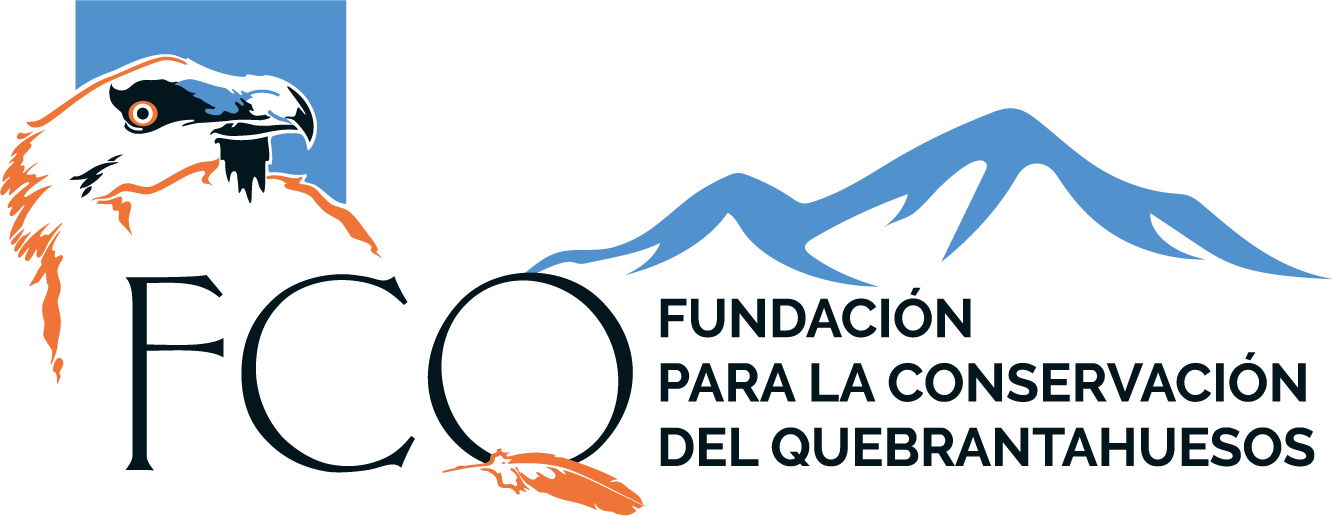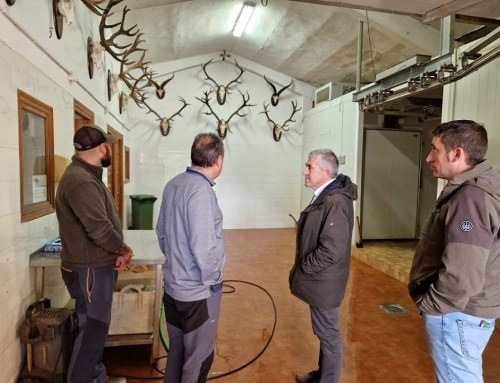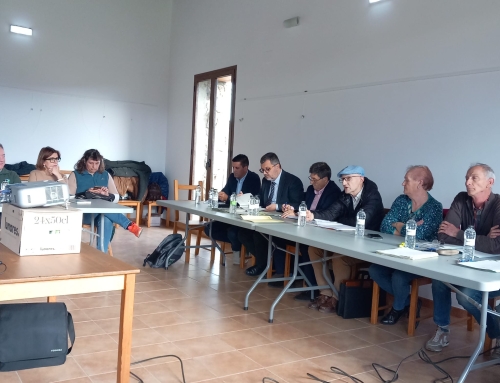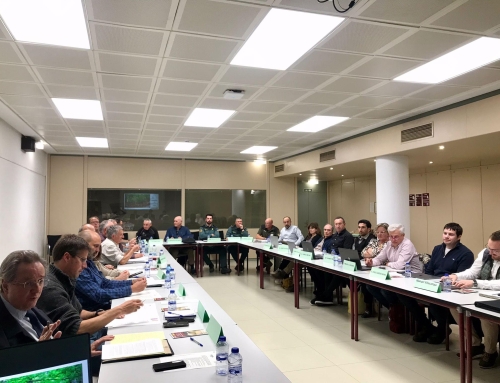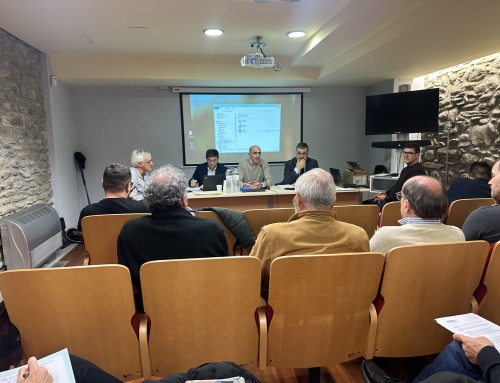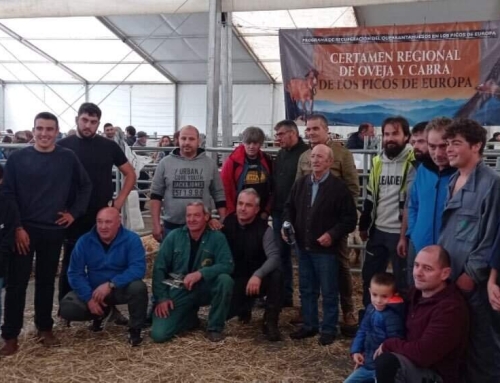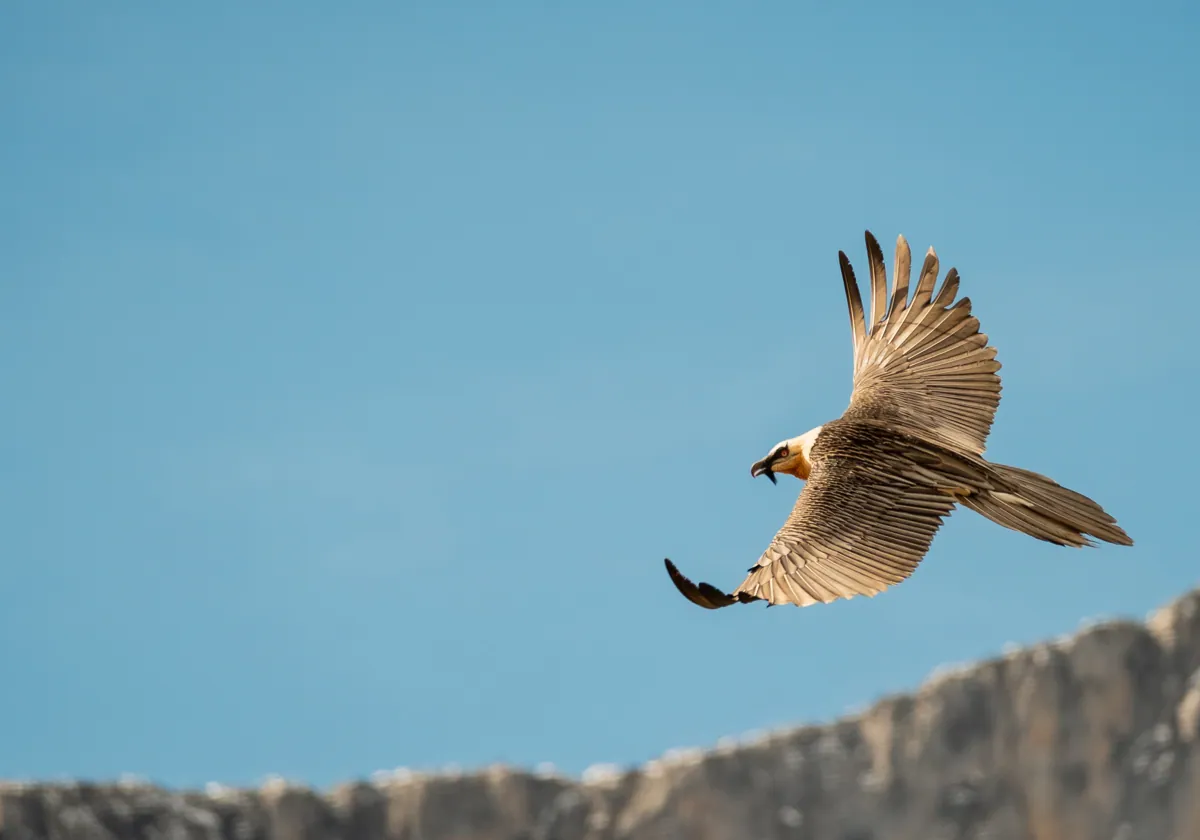
Inauguration of a permanent station to study the impact of climate change on the bearded vulture.
A collaboration between FCQ and Redeia will allow to know the risk of malaria, Nile fever or avian flu infection for these large birds. A station in Sierra del Cuera (Asturias) will now measure the health and environmental conditions in mountain habitats of bearded vultures. It is part of the joint agreement reached between the Foundation for the Conservation of the Bearded Vulture (FCQ) and Redeia, which includes several actions in the environment of preferential use in the municipality of Peñamellera Alta for the scavenger bird. The project called ‘Integral conservation area for the Bearded Vulture in the Sierra del Cuera’ (Asturias)’, an initiative that arose within a relationship initiated between the parties in 2022 and is now strengthened in favor of this endangered species that became extinct in the Cantabrian coast. The bearded vulture population in Spain is currently between 1,200 and 2,000 specimens. The most novel action that makes this initiative unique is the setting up of a monitoring station of the health and environmental conditions in mountain habitats that will allow the analysis of the vital values of the bearded vultures. For this purpose, samples of disease vectors such as hematophagous insects will be collected. By means of trap-boxes, the insects are captured every two weeks. These samples will be sent frozen for analysis to the Instituto de Recursos Cinegéticos (IREC), which is part of the Consejo Superior de Investigaciones Científicas (CSIC) and the Universidad de Castilla-La Mancha. This action will not only benefit the bearded vulture, but also other bird species, the livestock of the area and, ultimately, the whole habitat, as it will detect the presence of non-endemic mosquitoes in this mountainous area and know the level of exposure of the bearded vulture to these allochthonous pathogens that have been able to reach the latitudes of the Sierra del Cuera from tropical areas due to climate change. If there are mosquitoes, mainly from Africa, that can transmit, for example, malaria, Nile fever or avian influenza, the level of risk for these large birds, which are not currently prepared to deal with these diseases, will be known. This potential lethality could jeopardize the so far successful bearded vulture recovery program, as well as the survival of other species of native biodiversity. This is the importance of this project, which was born with the intention of permanence to achieve a stable data series that allows us to know trends of the bearded vulture and biodiversity in general in the long term. The hypothesis of the project’s scientists is that if these exotic diseases affect large birds, with a greater defense capacity, it is conceivable that the potential effects of these diseases on other smaller species will be, if possible, greater. The bearded vulture is an indicator of the state of the ecosystem as a whole. The project has installed a weather station that measures variables such as temperature, humidity, speed, wind direction, precipitation and atmospheric pressure.
Management
Other actions carried out in the framework of this ambitious project have consisted of the fencing of the enclosure and installation of video surveillance systems; the establishment of a capture point of specimens to be able to intervene in the birds, such as the installation of marking transmitters or the performance of veterinary checks and the implementation of cameras that will be activated in the presence of bearded vultures and capture images and high resolution videos that will account for their activity, behavior or physical condition. At the same time, a sanitary control point has been set up, where samples of droppings, feathers or other organic remains will be collected and analyzed by IREC. This information is important for managing the population, as it will generate a database with genetic aspects, detection of kinship, biochemical parameters for early warning of threats to the species, such as epidemiological or epizootic problems, as well as determining the presence of toxins or heavy metals, among others. In addition, for monitoring the health status of the birds, several thermographic cameras will allow early detection of pathologies through visual detection of the birds’ temperature. The project is completed by the installation of a scientific photography and filming point in a camouflage structure that does not interfere with the birds’ natural behavior, and an additional feeding point that will provide them with vitamin and mineral complexes. The director of the Foundation for the Conservation of the Bearded Vulture, Gerardo Báguena, has pointed out that, along with the anthropic origin of the threats to wildlife, there are other causes derived from environmental circumstances. “Global warming and the changes it causes in nature are one of the aspects that concern us, because we have already found bearded vultures affected by diseases associated with mosquitoes not present in Spain and have even caused the death of some specimens both in the wild and in captivity,” said Báguena, who warns of the “complexity” that will have to defend the European natural heritage of diseases that come from global change to which it is exposed. For his part, the head of the Environment Department of Red Eléctrica, Fernando Crespo, has expressed the interest and real commitment of the company in the protection of birdlife, which is demonstrated with different measures and investments especially aimed at mitigating risks and promoting both the conservation and recovery of species of special interest for biodiversity such as the bearded vulture. “Red Eléctrica is committed to the bearded vulture because it is a spectacular species that performs enormous biological functions in the ecosystem, but above all because of its highly threatened conservation status; because it serves as a bio-indicator of other necrophagous and because of the ease of working with the Foundation for the Conservation of the Bearded Vulture, which houses a lot of knowledge and very good professionals,” he stressed. Meanwhile, the veterinarian in charge of the research at IREC, Dr. Úrsula Höfle Hansen, has advanced that the ideal would be “not to find anything” but fears that they will probably find mosquitoes that transmit avian influenza, “very dangerous” for the Bearded Vulture and other necrophagous birds. “We suspect that we will find mosquitoes that should not appear at this altitude, that carry parasites that they should not carry and that could be a risk for the birds that come to feed, due to climate change, which modifies the average temperatures and allows the expansion of insects and extends their survival periods and their area of distribution,” he said. The work carried out by several public and private entities, under the impulse and leadership of the Foundation for the Conservation of the Bearded Vulture, has allowed four pairs to settle in Picos de Europa. Between 2010 and 2023, a total of 45 specimens of bearded vultures have been reintroduced in the mountains, which coexist with other large bird species such as griffon vultures, golden eagles or Egyptian vultures. Redeia has been collaborating with the foundation since 2022 with a joint work through a Plan for the Signposting of specific power line spans for the protection of the bearded vulture. With this project, Redeia takes another step forward in its commitment to habitat conservation and in meeting its biodiversity objective of achieving a net positive impact on nature by 2030.
Source:
